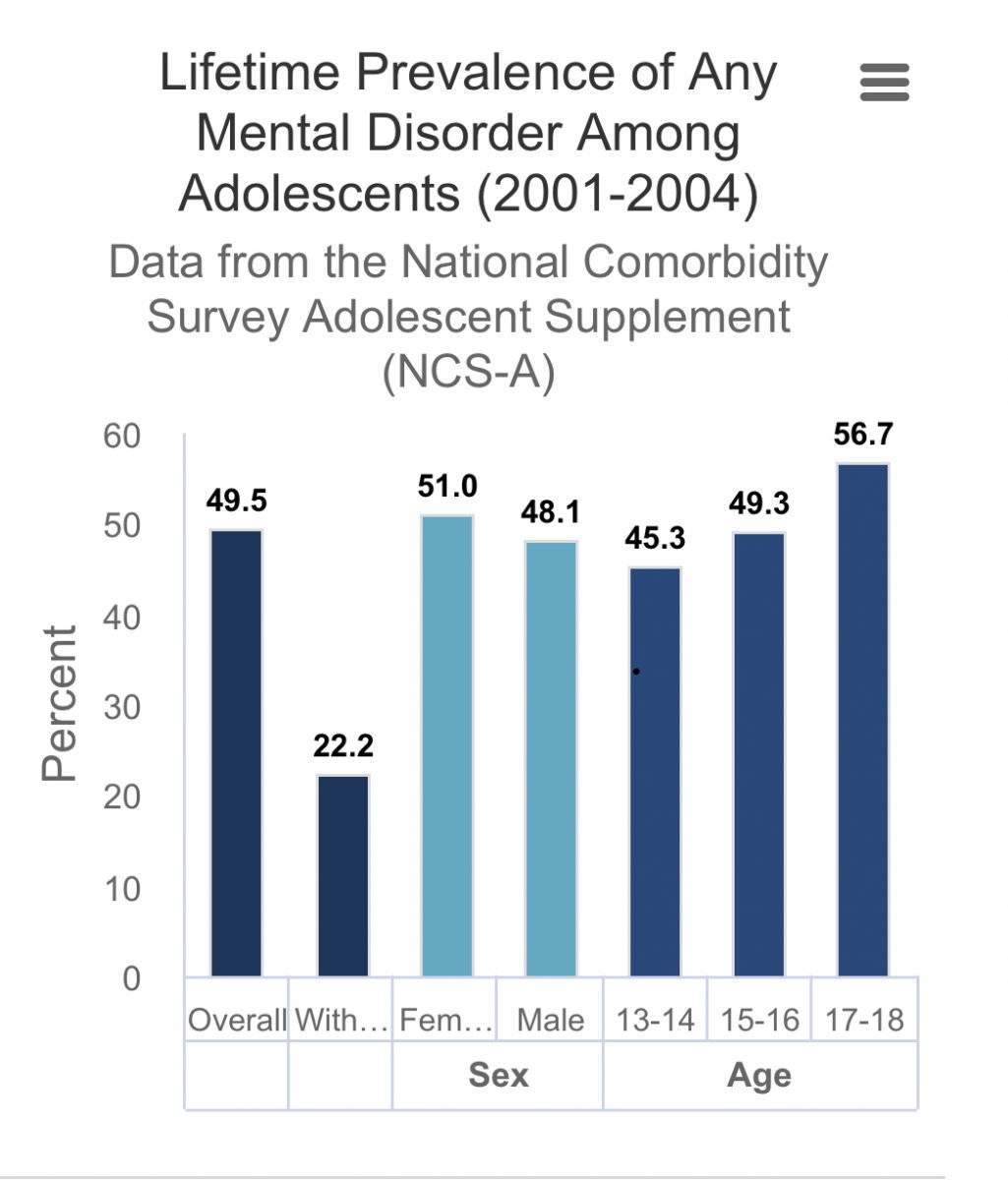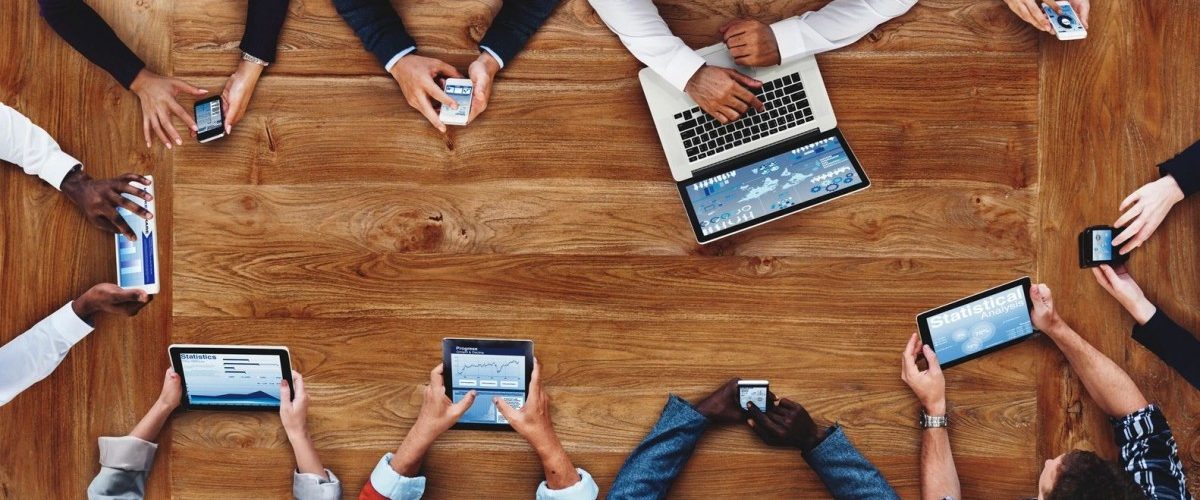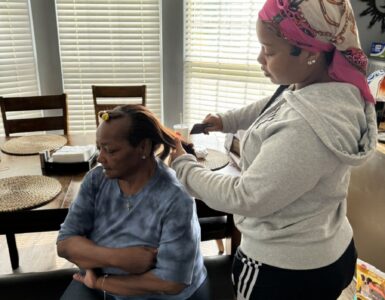By Kamryn Jackson
The perfect lighting, the perfect outfit, the perfect caption, can you picture it? It’s the production stage of posting on social media. The like count, the story reshares and the reposts, that’s the reaction phase. This is what our generation deems most important. Always having everything together, always caring about the image, rather than the authentic moment, these are the pressures of social media. Facebook, Instagram, SnapChat, TikTok, Twitter and all other social media platforms have so many imperative qualities that make connecting, networking and handling business on the go convenient. However, we also must address the impact of social media on the mental health of teenagers, especially during the years of COVID-19.
Although mental health sometimes has a negative connotation in society, it is important to talk about how one feels to get the help that they might need. According to the CDC, “Mental health includes our emotional, psychological and social well-being,” not to be confused with mental illness, which is more of the type of diagnosis. Mental illness is defined as “health conditions involving changes in emotion, thinking, or behavior (or a combination of these),” according to the American Psychiatric Association, and just like any other sickness, it is nothing to be ashamed of. “It’s important to get check ups from the neck up,” says Anita Jenkins, CEO of Howard University Hospital.

Not that Covid has disappeared, but the world around has increasingly been going back to normal with the reduction of masks and decreased virtual settings. Teenage years are tough in themselves but through Covid, the pressures of social media have taken a toll on the overall healthiness of teenagers. As an overview, in 2020, “An estimated 49.5% of adolescents had any mental disorder,” according to the National Institute of Mental Health.
While this all may not stem directly from social media usage, “social media puts pressure on ourselves,” says Shane Perrault, Ph.D., a psychologist and specialist in family and relationship issues.
Perrault explains that the pressure comes from “comparing ourselves to a snippet or unrealistic expectation of what it is to be happy, feeling less than because we’re exposed to a lot more (compared to without social media).” Although so many different resources are at our fingertips through the usage of social media, the urge to compare a regular lifestyle with a luxury lifestyle of “blue check-marked” people is more intense than ever, especially during the time of a pandemic.
Looking at Covid more specifically though, Perrault mentions, “we haven’t seen Covid before” as this is the first international pandemic the modern world has encountered and battled. “We need social support to help with anxiety and depression,” in general, he said. “In Covid though, we longed for virtual support, so after coming back we didn’t know how to interact.” By this, Perrault means that anxiety and depression were common before Covid started, but it was easier to cope and get treatment by being acclimated to a social environment everyday.
Instead, with Covid, people were isolated. There was no such thing as social interaction that didn’t involve the virtual setting. As people are starting to move back to normal, he is seeing that people are continuously reverting to social media usage, even while being in a room full of people, making it harder to interact.
The National Alliance on Mental Illness (NAMI) highlights an interesting point on this topic. Because we learn how to communicate and interact through facial expressions and tone of voice, being immersed into social media is stripping those learning steps from people.
“If the majority of your interactions with others are coming through a screen or in written messages, especially when you are young and your brain is still developing, you may be missing out on opportunities to improve your people skills through face-face communication,” NAMI stated. That’s why it may be such a difficult adjustment back into in-person learning for schools and without the use of masks covering facial expressions.
“Social media has its algorithms that are set to be redundant on what you’re looking at, so if you’re looking at negative things, that’ll make you feel bad, then you’ll go into a spiral,” said Sheralyne R. Tierseron, a teacher and director of the Advance College Academy Program at John Randolph Tucker High School in Richmond, Virginia.
“On the other hand, if you’re looking at more positive things, then it’ll be a place to find more uplifting things,” Tierseron added. This goes to show that the effect social media has on the user is all dependent on how the user chooses to use the platform.
When asked about what she’s seen in the classroom, though, her answer mainly pertains to what she’s seen in most of her students: “social development that comes with brain development and how to handle things that are stressful and that upset us, how to navigate those emotions.”
“I’m seeing that students that are older exhibit the same symptoms of students that are in 9th and 10th grade,” she said. “Students that are in 9th and 10th are exhibiting pre-high school characteristics.” This all goes back to the maturity levels and the resistance of growing up due to the isolation from Covid.
As far as the drive of her students and the motivation to overcome obstacles, Tierseron says, “I’m seeing less resilience to stress, anxiety, anger, sadness – the feeling of not having the tools, because we lost all that experience and that time was not stress free.”
This means that students are more willing to give up, have breakdowns and have less healthier ways to cope when feeling overwhelmed, experts say. As students continue to grow and graduate to higher levels, this is not the best strategy for handling situations. Society needs to focus on solutions to aid adolescents from still feeling isolated, having to suffer in silence.
Moving forward, it is hard to tell how Generation Z will grow up to live within the addiction to social media usage. “It’s always good to find a balance,” Tierseron stated. While social media may have its perks and benefits, it gets overwhelming when it consumes one’s life.
Mark Johnson, the chair of the Department of Community and Family Medicine, says, “we don’t know the outcomes, but early evidence suggests that it (the excessive use of social media) is not good. It’s hard not to wonder if students would be doing other productive things.” Families and medical experts need to take a deeper look at health patterns among current and future adolescents, taking the extra step to make sure that they are healthy given the growing prevalence of social media and the effects of the pandemic. There have been 1,140 suicides in Virginia alone so far in 2022, according to World Population Review.
Johnson recommends that “pediatricians do screenings for depression at checkups, more education on mental health for parents, and that society forbids the stigma on mental health, but instead addresses illnesses as a disease like arthritis.”





Recent Comments